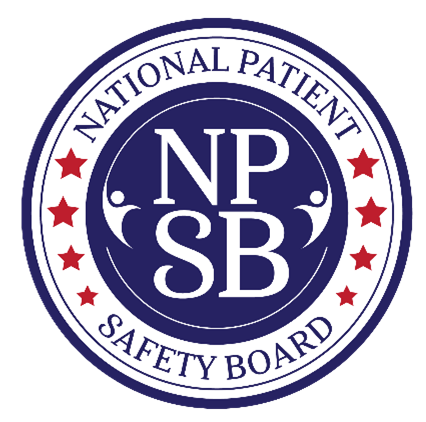Project & Program Updates
NPSB Policy & Advocacy Coalition Calls for Patient Safety in Mental Health
This call to action responds to a September 21 bipartisan request from Senate Finance Committee Chairman Ron Wyden (D-OR) and Ranking Member Mike Crapo (R-ID) for information for legislative ideas to improve healthcare services for Americans with mental health and substance use disorders. The Behavioral Health Package contemplated by the Senate must address the crisis in preventable medical errors that has been escalating in the U.S. for two decades. Prior to COVID-19, medical errors were the third-leading cause of death in the United States, after heart disease and cancer.
The coalition said that establishing a NPSB, modeled after the National Transportation Safety Board (NTSB), is a crucial component of the solution.
"Our nation must increase the safety and reliability of mental health care to protect patients and providers, increase the public's trust in mental health providers, and help reduce the stigma associated with receiving mental health services," writes Dr. Karen Wolk Feinstein, chair of the National Patient Safety Board Policy & Advocacy Coalition.
The NPSB Policy & Advocacy Coalition is composed of representatives from hospitals, health systems, insurers, patient safety groups, consumer advocates, foundations, universities, technology companies, employers, and other purchasers of health care. A list of coalition members can be found at npsb.org.
The NPSB's three core functions would improve patient safety in mental health settings in the following ways:
- Identifying Patient Safety Events. The NPSB would establish an interagency coordinating committee to review, update and prioritize patient safety indicators in mental health settings. Once adverse events are identified, the NPSB would autonomously collect anonymous data from electronic health records and other data sources.
- Studying the Root Causes of the Patient Safety Events. A study division at the NPSB would determine the systemic risk and potential learning. The analyses would have one sole purpose: to establish facts, circumstances, and causes or probable causes of patient safety events.
- Issuing Recommendations to Prevent Patient Safety Events. The NPSB would then create nonpunitive recommendations for providers and healthcare agencies.
To learn more, visit npsb.org and subscribe to "Up Next for Patient Safety," a podcast series examining the ongoing patient safety crisis in the U.S. and what must be done about it. The newest episodes examine health equity within patient safety and pandemic preparedness.
Related Posts
By accepting you will be accessing a service provided by a third-party external to https://www.jhf.org/
